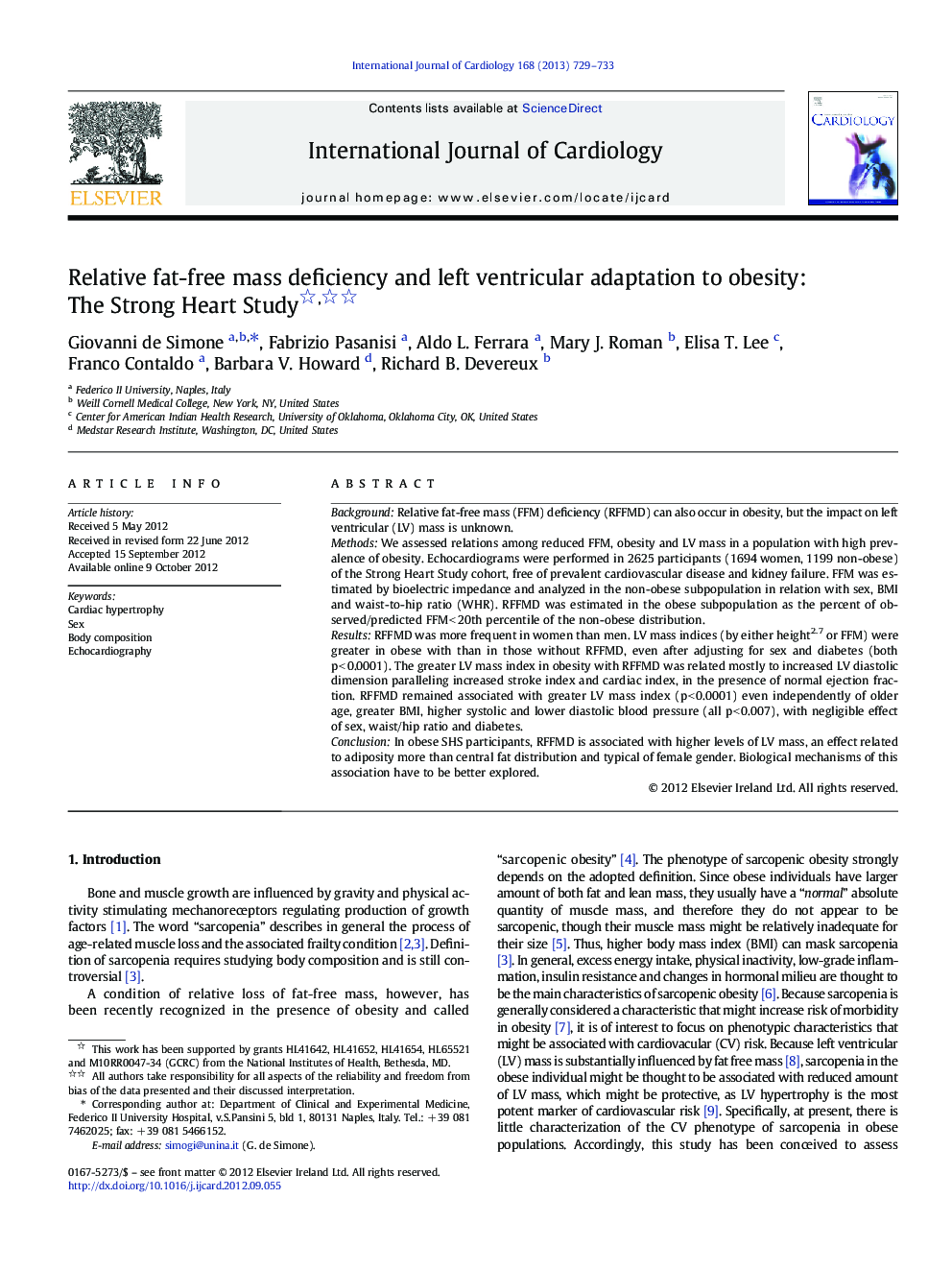| Article ID | Journal | Published Year | Pages | File Type |
|---|---|---|---|---|
| 5974036 | International Journal of Cardiology | 2013 | 5 Pages |
BackgroundRelative fat-free mass (FFM) deficiency (RFFMD) can also occur in obesity, but the impact on left ventricular (LV) mass is unknown.MethodsWe assessed relations among reduced FFM, obesity and LV mass in a population with high prevalence of obesity. Echocardiograms were performed in 2625 participants (1694 women, 1199 non-obese) of the Strong Heart Study cohort, free of prevalent cardiovascular disease and kidney failure. FFM was estimated by bioelectric impedance and analyzed in the non-obese subpopulation in relation with sex, BMI and waist-to-hip ratio (WHR). RFFMD was estimated in the obese subpopulation as the percent of observed/predicted FFM < 20th percentile of the non-obese distribution.ResultsRFFMD was more frequent in women than men. LV mass indices (by either height2.7 or FFM) were greater in obese with than in those without RFFMD, even after adjusting for sex and diabetes (both p < 0.0001). The greater LV mass index in obesity with RFFMD was related mostly to increased LV diastolic dimension paralleling increased stroke index and cardiac index, in the presence of normal ejection fraction. RFFMD remained associated with greater LV mass index (p < 0.0001) even independently of older age, greater BMI, higher systolic and lower diastolic blood pressure (all p < 0.007), with negligible effect of sex, waist/hip ratio and diabetes.ConclusionIn obese SHS participants, RFFMD is associated with higher levels of LV mass, an effect related to adiposity more than central fat distribution and typical of female gender. Biological mechanisms of this association have to be better explored.
